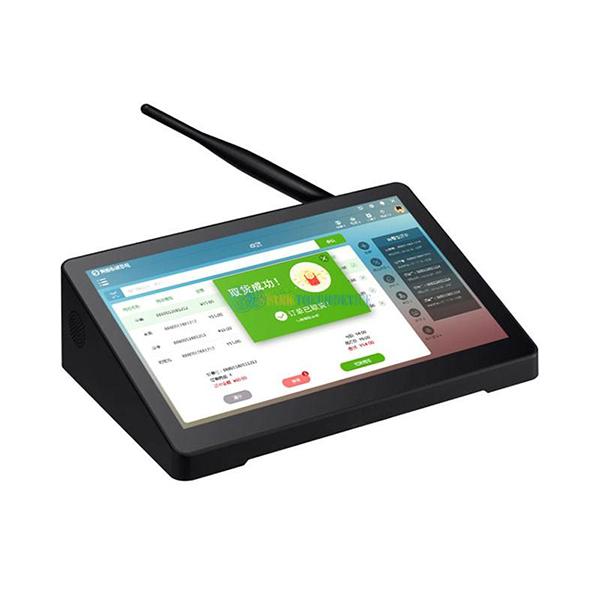Welcome STARK TOUCH DEVICE!
Solutions
Tips for cleaning and moisture-proofing industrial control computers in damp environments
Effective Cleaning and Moisture Prevention Techniques for Industrial Control Computers in Humid Environments
Industrial control computers (ICCs) operating in humid environments face unique challenges, including corrosion, condensation, and electrical shorts. Proper cleaning and moisture-proofing practices are essential to maintain system reliability and prevent costly downtime. This guide provides actionable strategies for technicians to protect ICCs from humidity-related damage during maintenance.

Understanding Humidity-Related Risks
High humidity levels accelerate oxidation of metal components, degrade insulation materials, and promote fungal growth inside enclosures. Condensation forms when warm, moist air contacts cooler surfaces, creating water droplets that can short-circuit circuits or damage sensitive electronics. In coastal or industrial settings, salt-laden moisture exacerbates corrosion, particularly on connectors and circuit board traces.
To identify humidity-related issues, inspect ICCs for visible signs of moisture ingress, such as water stains on enclosures, rust on screws, or discolored PCBs. Use a hygrometer to monitor ambient humidity levels; readings above 60% RH (relative humidity) indicate a high-risk environment requiring immediate intervention.
Pre-Cleaning Moisture Assessment
Before initiating maintenance, assess the ICC’s exposure to moisture sources. Check for leaks in nearby pipes, sprinkler systems, or HVAC units that could introduce water into the control cabinet. Inspect cable entry points and enclosure seals for gaps or cracks, as these serve as pathways for humid air.
For systems installed in outdoor or semi-outdoor locations, verify that drainage channels beneath enclosures remain unobstructed. Standing water near the base of cabinets increases humidity levels inside and accelerates corrosion. Use a moisture meter to measure humidity within the enclosure; values exceeding 70% RH warrant temporary dehumidification before cleaning.
Cleaning Techniques for Humid Environments
Cleaning ICCs in humid conditions requires specialized approaches to avoid trapping moisture or causing electrical hazards:
Removing Surface Moisture
Start by wiping down the exterior of the enclosure with a lint-free cloth slightly dampened with deionized water. Avoid using excessive liquid, as pooled water can seep into seams and damage internal components. For stubborn dirt or salt deposits, apply a mild, non-abrasive cleaner diluted to 1:10 with water, then rinse with a damp cloth and dry thoroughly.
Cleaning Circuit Boards and Connectors
Dust and grime on PCBs attract moisture, creating conductive paths that lead to shorts. Use a soft-bristled brush to gently dislodge debris from components, paying close attention to areas around capacitors, resistors, and integrated circuits. For heavier contamination, apply isopropyl alcohol (IPA) with a purity of at least 90% using a spray bottle held 20–30 cm away. Allow the alcohol to evaporate completely before re-energizing the system.
When cleaning connectors, avoid submerging them in liquid or using abrasive tools that could scratch metal contacts. Instead, dampen a cotton swab with IPA and carefully wipe each pin, rotating the swab to ensure full coverage. For multi-pin connectors, use a dedicated cleaning tool designed for the specific interface type.
Drying Procedures
After cleaning, dry the ICC thoroughly to prevent residual moisture from causing damage. Use compressed air (filtered to remove oil and water) to blow out crevices and ventilation openings, holding the nozzle at a 45-degree angle to avoid forcing moisture deeper into the enclosure. For systems with removable modules, place them in a controlled environment with a dehumidifier for 24–48 hours before reinstallation.
Long-Term Moisture Prevention Strategies
To minimize future humidity-related issues, implement these proactive measures:
Enclosure Sealing and Ventilation
Upgrade enclosure seals to silicone gaskets or EPDM rubber, which offer superior resistance to moisture and temperature fluctuations. Ensure all fasteners are tightened to the manufacturer’s specifications to maintain a watertight seal. For systems requiring ventilation, install filtered air vents with hydrophobic membranes that block water droplets while allowing airflow.
Desiccants and Dehumidifiers
Place moisture-absorbing desiccant packs inside enclosures to reduce humidity levels. Choose silica gel or clay-based desiccants with color-changing indicators to monitor saturation levels. Replace packs every 3–6 months, or more frequently in high-humidity environments. For larger cabinets, consider installing a low-wattage dehumidifier with automatic shutoff to maintain optimal RH levels.
Environmental Monitoring
Deploy humidity and temperature sensors inside enclosures to track conditions in real time. Configure alarms to alert technicians when RH exceeds safe thresholds, enabling prompt intervention before damage occurs. Integrate sensor data with the ICC’s control system to trigger automated responses, such as activating ventilation fans or adjusting heating elements.
By combining thorough cleaning practices with robust moisture prevention strategies, technicians can significantly extend the lifespan of ICCs in humid environments. Regular inspections and maintenance schedules tailored to local climate conditions ensure systems remain operational and reliable, even in challenging settings.


